Many people believed that Germans couldn’t resist the Nazi dictatorship, war propaganda, and Jewish people’s deportation. However, a street protest in 1943 showed that resistance was possible and could be successful. Then, the Rosenstrasse Protest happened.
Hundreds of unarmed German women stood day and night for a week doing something unheard of in Nazi Germany. They stood close to Gestapo agents armed with machine guns and demanded the release of their Jewish husbands locked up in a Jewish community center close to Alexanderplatz.
The strength, courage, and passion of these women prevailed over the Nazi regime. As thousands of other Berlin Jews were sent to Auschwitz, these Jews married to Aryan German women were set free.
They would be the last Jews living in Berlin, and they lived to tell this story.
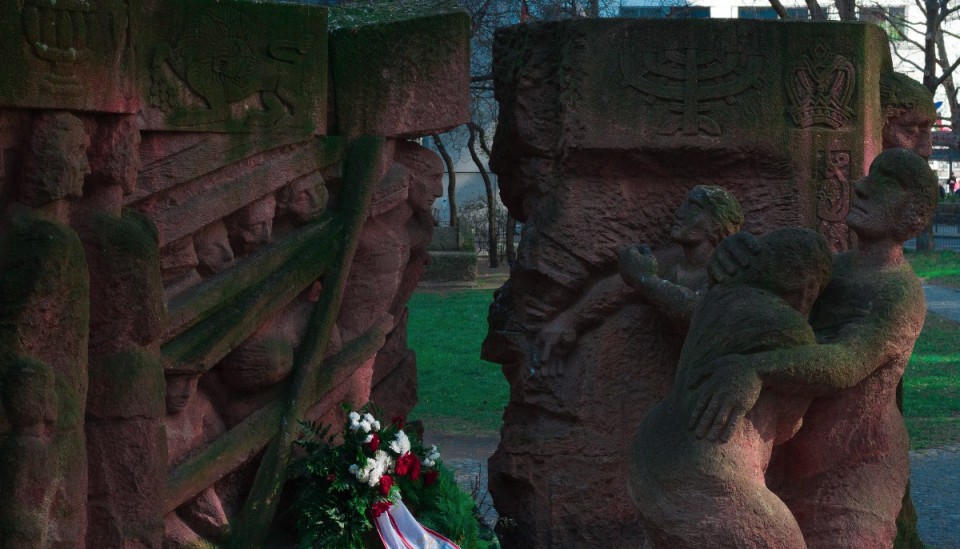
This is the story behind the Rosenstrasse Protest in 1943.
This protest on Rosenstrasse was the only public German protest against the deportation of Jews. It shows the contradicting notion that Germans had to choose between resisting the Nazi Regime and martyrdom. Those German women stood by their men and refused to abandon them in the face of imminent death.
Most people don’t know that, but Jews whose German spouses did or had divorced them were immediately sent to death camps. Jews whose wives stood by them survived.
By the end of the Second World War, 98% of German Jews who survived the Holocaust were in these intermarriages.
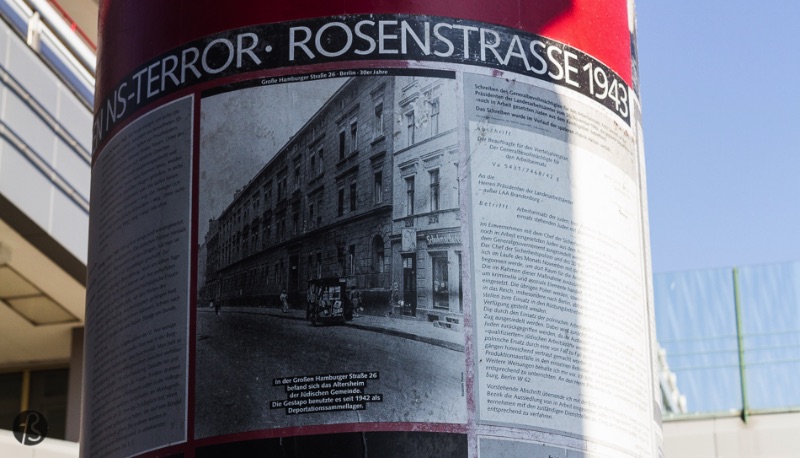
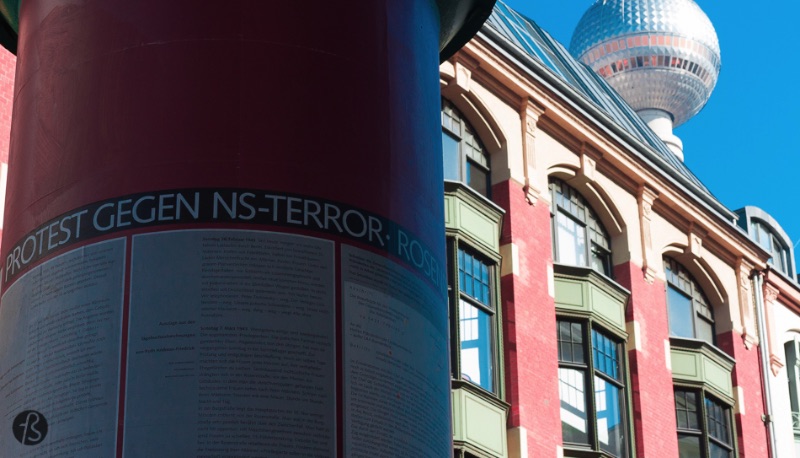
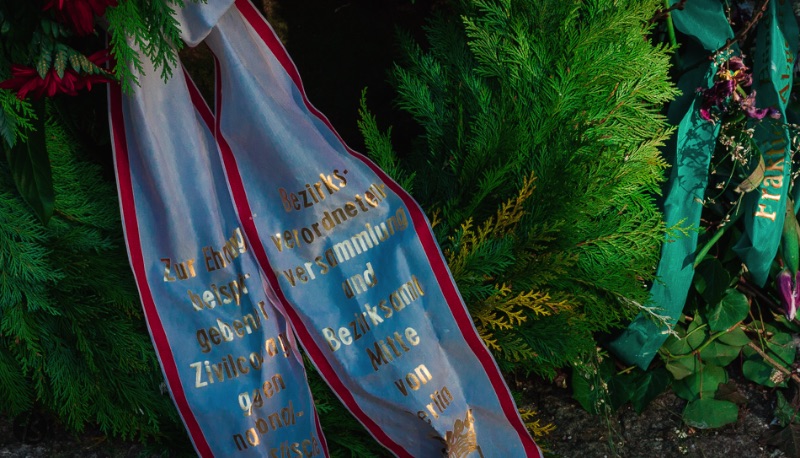
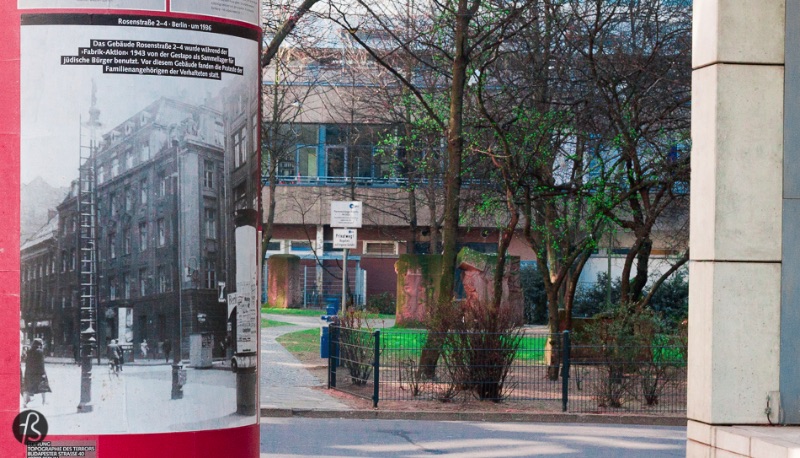
The Rosenstrasse Protest
Nazi Germany had been defeated in the Battle of Stalingrad, and the Gestapo had arrested the last Jews living and working in Berlin. This is the Fabrikaktion, the roundup of the last Jews to be deported starting 27 February 1943.
Millions of German Jews had been murdered by early 1943, and only those Jews considered irreplaceable to the war effort and those privileged, married to Aryan German women, were spared. But this was about to change.
Those privileged Jews married to Aryan German women were defying the Reich ideology, and they were seen as the last remaining obstacle to making Germany free of Jews once and for all.
No Jew was safe in Berlin on February 27, 1943
In the early morning, hundreds of police, Gestapo agents, and the SS walked around Berlin, arresting the last Jews of the city. These people were taken from factories, grabbed on the streets, and torn from their homes and families. They were forced with whips and bayonets and taken to collection centers around Berlin.
Of the last 10,000 Jews living in Berlin during this final roundup, 8,000 were sent to Auschwitz, where they were murdered. The remaining 2,000 were the privileged ones who were married to an Aryan German woman. Those were separated from the rest and locked up at Rosentrasse 2-4, a Jewish center in Berlin’s heart close to where the Old Synagogue used to be.
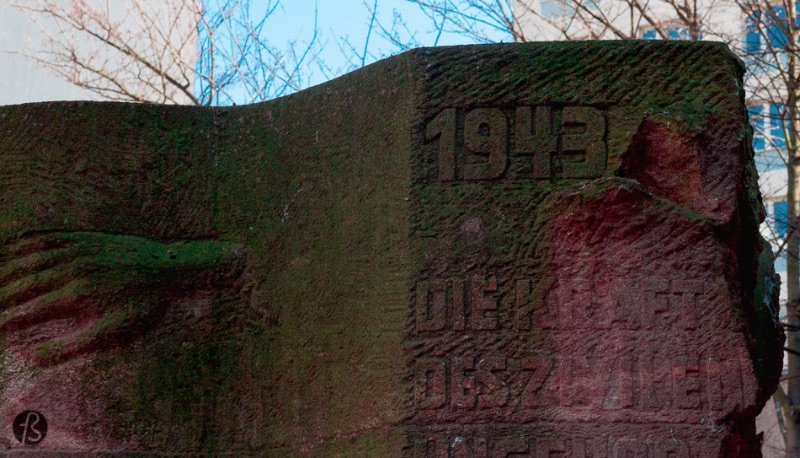
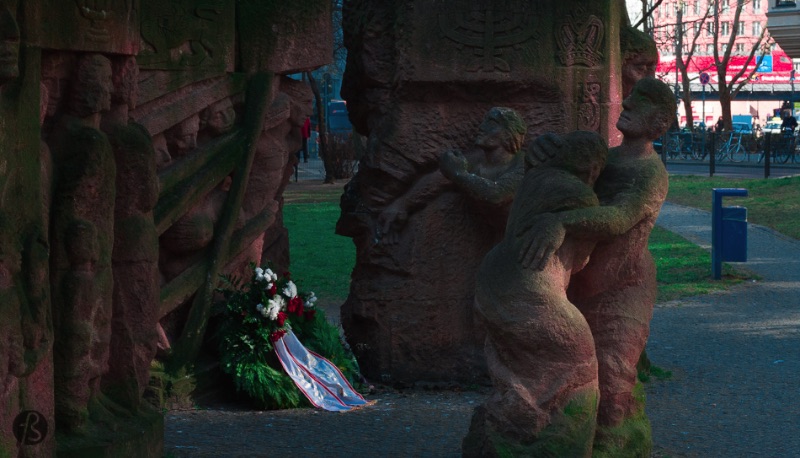

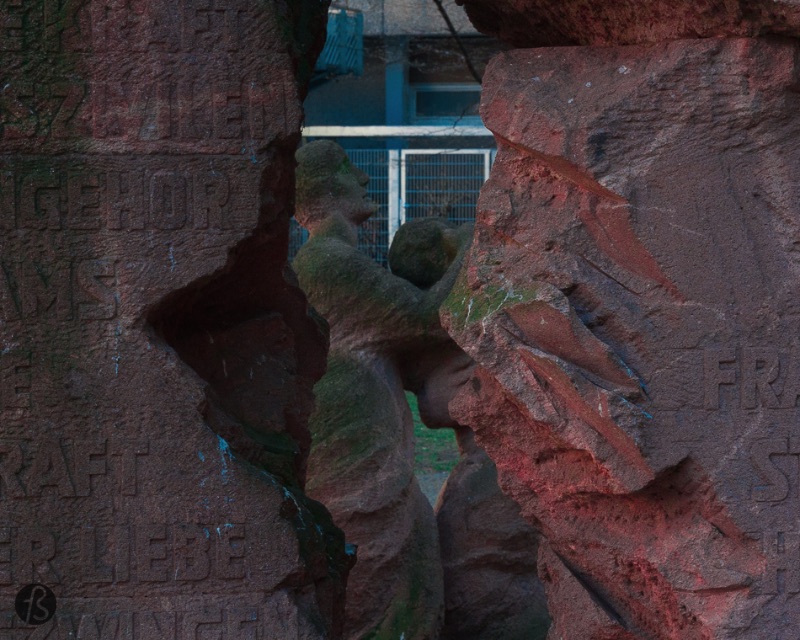
As soon the word of what happened during the early morning hours started to spread around the city, these Jewish men’s German wives began going to Rosentrasse to find their husbands. The first day stretched into the second one, and more people gathered around.
The desperation grew with the numbers, and some women shouted in unison: Give us our husbands back!
This act became the Rosenstrasse Protest.
Gestapo agents and the SS tried to intimidate these women with machine guns and threats of arrest, but they didn’t leave. Charlotte Israel, one of the women who were there during the protest, was interviewed in 1990 about what happened during those days and said that as soon as the machine guns were set up, the women backed, but they knew that they would be shot in any case.
If they stayed there protesting and trying to find their husband, they could be shot. If they left, they knew their husband would die. Instead of backing down, they started yelling murderer, murderer, murderer, murderer in unison.
The Nazi officials were not happy with what was happening at Rosenstrasse, and Goebbels was particularly exasperated. He couldn’t believe that Germans were siding with Jews. On March 6, 1943, Goebbels ordered the release of intermarried Jews after more than a week of protest.
As those intermarried Jews were returning home, the other Berlin Jews were traveling to see their fate in death camps. Goebbels only released the intermarried Jews because he knew he would finish the job in a few weeks, something that never happened.
The cover-up operation for the Rosenstrasse Protest started as soon as the Jews were released. The Nazi lies insisted that the protest was against the British bombing of Berlin, and those people were homeless, looking for better conditions.
Goebbels blamed the arrest of the intermarried Jews on overzealous Gestapo officers who took their authority to the next level. And, of course, downplayed the influence of the protesters in the decision to free the Jews.
Goebbels knew that if the Rosentrasse protest spread beyond Berlin, the program of genocide would be in trouble. So, if the Rosentrasse protest was over, Nazi Germany could continue the murder of Jews elsewhere without any protests, and this is what happened.
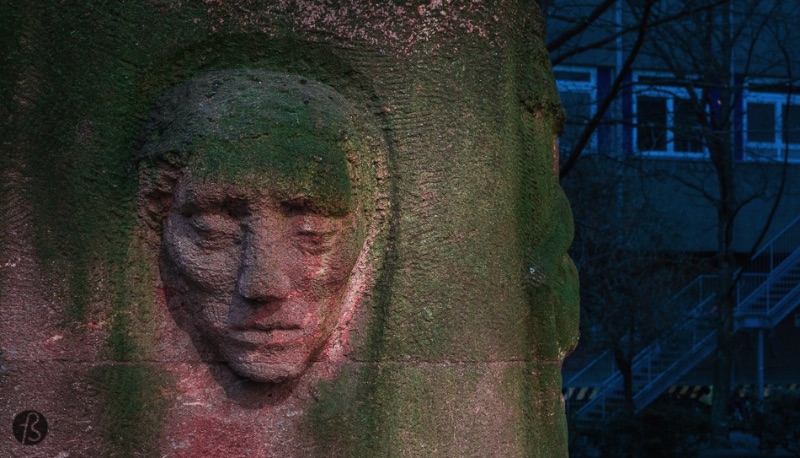
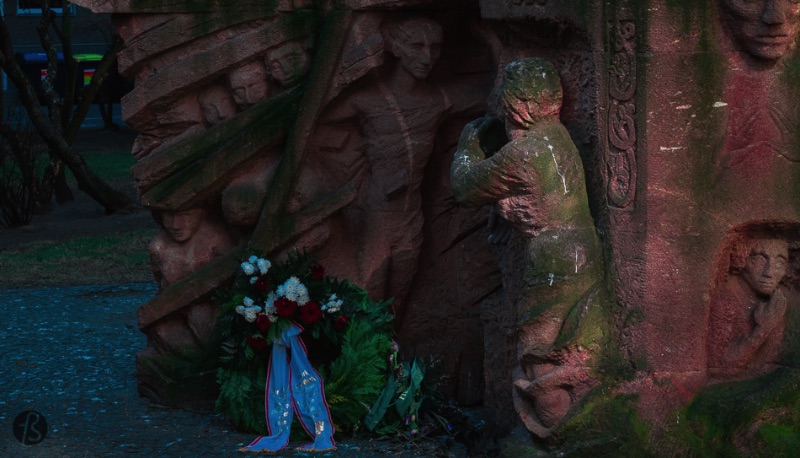
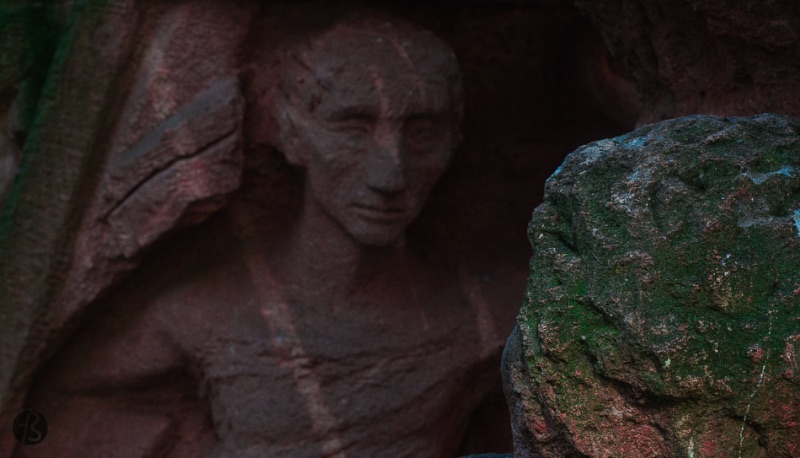
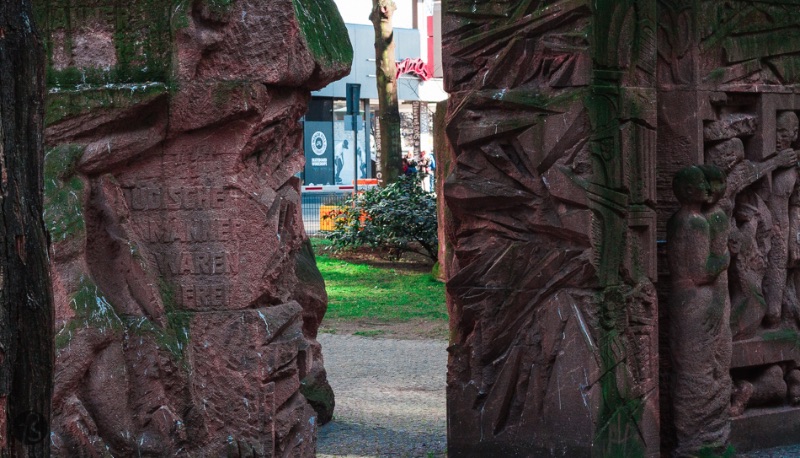
Rosentrasse Protest Memorial
Rosentrasse runs between Hakescher Markt and Alexanderplatz. It is one of these tiny roads, and you walk by without knowing what happened there. This is where you can see the Block of Women, where the Old Synagogue used to stand before the Second World War.
Block der Frauen, Block of Women in German, is the work of Ingeborg Hunzinger, an East German sculptor who created the memorial for women who participated in the Rosentrasse Protest. It was erected in 1995, near where the protest happened in 1943.
Ingeborg Hunzinger first proposed the memorials to East and West Berlin’s city councils in the late 1980s. Even though the councils agreed to help with some of the construction costs, Ingeborg Hunzinger bore most of the expense.
And Ingeborg Hunzinger is glad she did the memorial since the Rosentrasse Protest was an important facet of Berlin’s history. And most people don’t even know it happened.
The strength of civil disobedience, the vigor of love overcomes the violence of dictatorship; Give us our men back; Women were standing here, defeating death; Jewish men were free.
This is written in German on this memorial made of reddish sandstone, with Jewish symbols and characters portraying desperation and fear. But also the cohesion and unity of the remaining Jews against the Nazi Regime.
Opposite the memorial, on the other side of this small park, you can see a sculpture seated on a park bench. I didn’t know if this was a part of the Rosenstrasse Protest Memorial, but it is. It’s a reminder of the fact that Jews were forbidden to sit on benches at the time.
To mark the building where those Jewish men were arrested, a rose-colored Litfaß column stands 2–3 meters high, filled with posters telling the story behind the protest. If you are trying to find this memorial coming from Alexanderplatz, this is the first sign that you are close to the place.
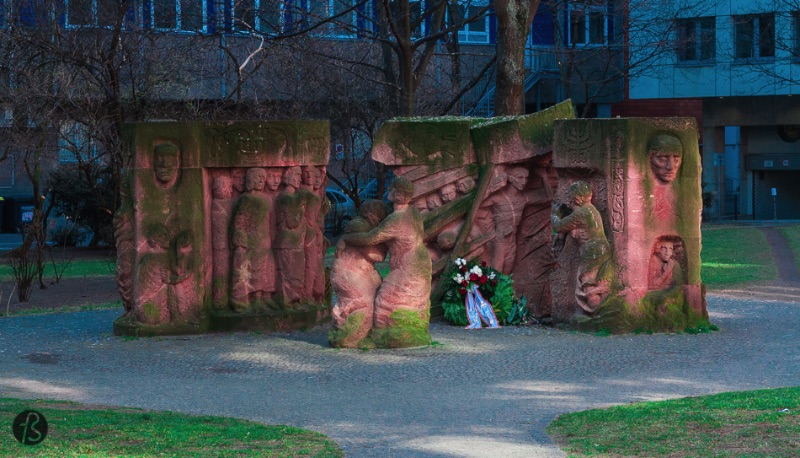
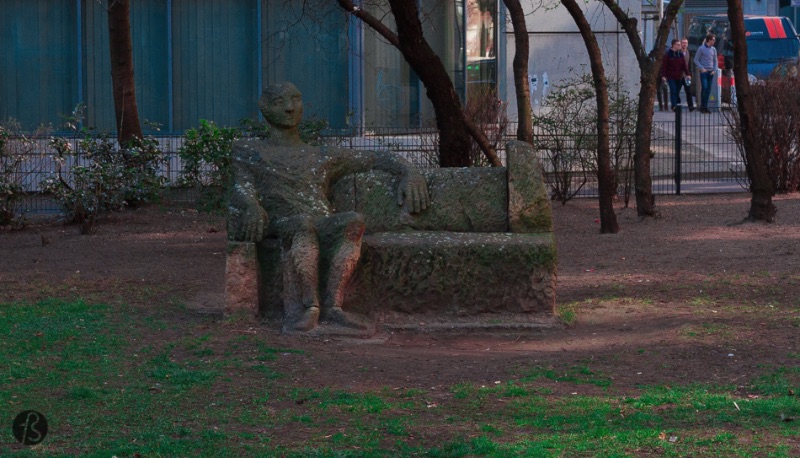
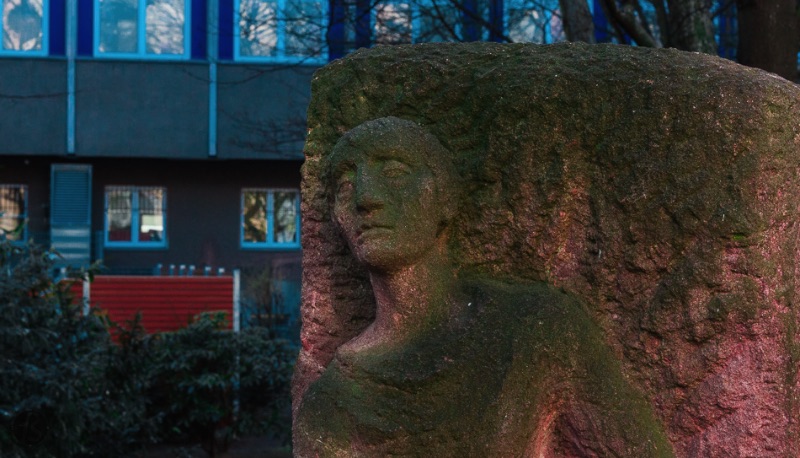
I have to say that I walked in front of the memorial a few dozen times before I decided to research what it was. And I’m pretty sure most people who walk past this memorial don’t even know what it stands for.
This is one of the reasons I decided to write about this place. More people need to know what happened there and how Nazi Germany was opposed, and how those women on the street managed to get what they wanted.
You can find the Rosentrasse Protest Memorial close to Alexanderplatz on Rosentrasse. If you are coming from Alexanderplatz, you will see it on the left side of a small park.
You can learn more about the Rosentrasse Protest in the book Resistance of the Heart: Intermarriage and the Rosenstrasse Protest in Nazi Germany from Nathan Stoltzfus. There is a German movie about the protest as well called Rosenstraße.
This research came from Wikipedia, Berlin.de, and Florida State University.
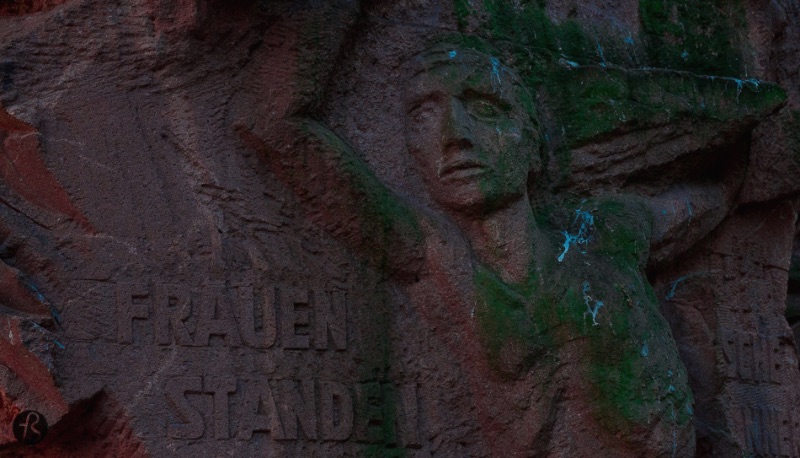

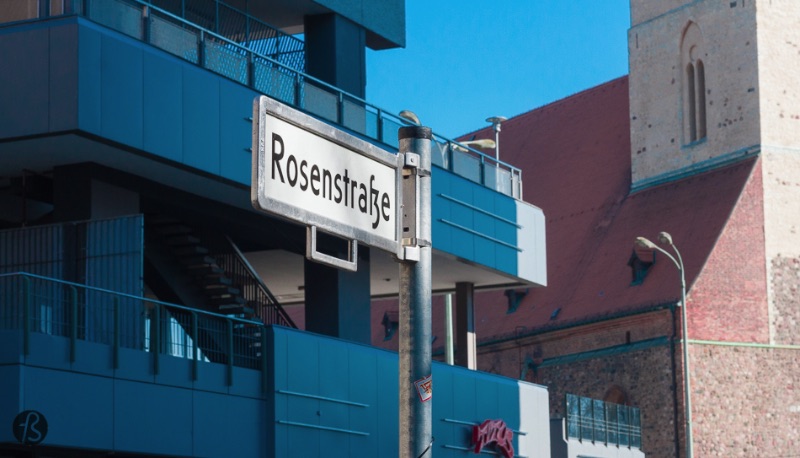
Block of Women: The Rosenstrasse Protest Memorial in the heart of Berlin
Rosenstraße
10178 — Berlin